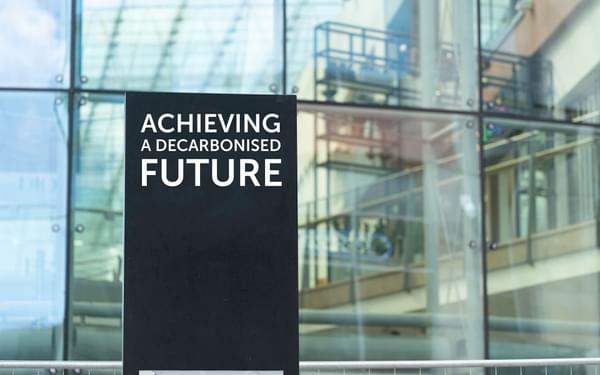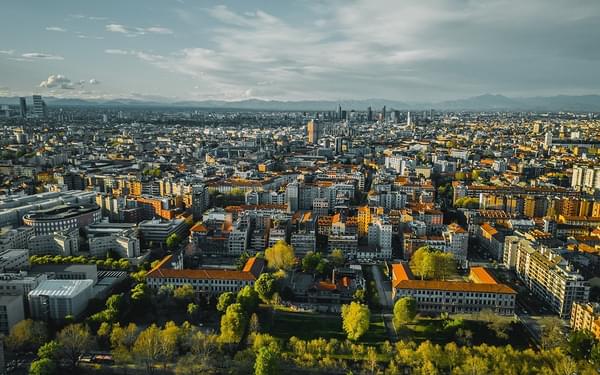Back to Articles
How the London Plan sets the example for consistency in climate-related policy making
6th Mar 2024
By Lara Hopwood, Sustainability Consultant, and Isabelle Moore, Placement Sustainability Student
On a national level, policy commitments and rhetoric around climate change have been very unstable in recent weeks. It got us thinking that politicians of all creeds would do well to reflect on what London has achieved over a very long time period with respect to the environment, and how a consistent approach, irrespective of politics, can lead to progress.
Climate commitments tangled up when action needed
With the recent confirmation that global warming has exceeded the 1.5˚C threshold across an entire year for the first time [1], tackling climate change has never been more pressing.
Addressing the climate emergency requires urgent action and political collaboration is essential for progress. Sustainability is the buzzword, but it often finds itself entangled in the complex web of politics.
While political leadership undoubtedly holds significant sway in advancing sustainable initiatives, it begs the question: does the current approach to policy formulation truly foster sustainable progress?
Often, sustainable policies crafted by governments seem to be driven by political expediency, prioritising short-term gains over substantial, long-lasting sustainability advancements.
However, the London Plan, a strategic document outlining the city's spatial development, stands as an exemplary model in demonstrating how sustainability can persist beyond political cycles - and how consistency in policies can lead to success.
As long ago as 2003, London's ground-breaking congestion charging scheme was introduced by Ken Livingstone, and when he sought re-election in 2008, he put the climate agenda at the heart of his campaign. He aimed to cut London's CO2 emissions by 60% by 2025 and talked of making civic buildings more energy-efficient [2].
Boris Johnson succeeded Ken Livingstone and while his record receives mixed reviews, he successfully implemented his predecessor's idea for a bike-sharing programme and invested significantly in upgrading many London Underground lines [3].
Following his declaration of a climate emergency in 2018, the current mayor, Sadiq Khan, released the ambitious target of London being net zero carbon by 2030, putting climate change top of the agenda [4]. Khan has also offered London boroughs a share of £5.3 million, out of the Air Quality Fund, to improve air quality. This fund has already helped pedestrians reduce their exposure to pollution by up to 60%, by providing new 'clean air routes' and a healthier urban landscape [5].
The London Plan - shining a light on consistent environmental policy
The sustainability policies outlined in the London Plan, have demonstrated remarkable consistency over the past two decades.
Despite changes in mayoral leadership, with representatives from different political parties, and even different political viewpoints from within the same parties, the perception is of minimal change and further evolution of existing policies across this time period in the overall sustainable development of London.
Three great examples of the benefit of a consistent and sustained strategy include:
1. Air quality initiatives and targets
A leading initiative has been the Ultra Low Emission Zone. Since its introduction in 2019, fine particulate matter (PM2.5) emissions in inner London have decreased by 180 tonnes, representing a 7% reduction compared to a scenario without ULEZ.
Within the ULEZ area specifically, PM2.5 emissions have dropped by 80 tonnes, marking a 19% reduction over the same period [6].
London was also the first place to introduce the concept of 'air quality neutral', which is now being initiated by other local authorities within their planning policies. For London, this has evolved into 'air quality positive'.
Air quality positive brings focus at an early stage of the development of a masterplan to the overall layout of a site as it requires developers to provide a statement at planning stage on how a development will achieve this to the benefit of its surrounding community - an area Hydrock's Sarah Slater covered in an article on air quality in 2023.

2. Active travel initiatives
The promotion of active travel has been included in the London Plan since 2004, and since then, progress in London's active travel opportunities is undeniable.
The introduction of Boris Johnson's cycle hire scheme was pivotal in promoting active travel in the city and was the catalyst for a huge increase in daily cycle trips. In 2000, an estimated 300,000 journey stages were taken daily by bicycle; by 2021 this number had tripled to 900,000 {7].
Under the current mayorship of Sadiq Khan, there is continued impetus for sustainable progress. The introduction of the ambitious target that by 2041 all Londoners will be able to undertake at least 20 minutes of active travel daily is evidence of the continued trajectory of promoting active travel.
3. Ambitious net zero target
London has set a target of being net zero by 2030 - two decades sooner than the wider UK's 2050 target. This has led to London being described as ‘leading the UK’ in reducing emissions.
The clear and objective policies of the London Plan seem to have helped make particular progress in supporting the built environment to become more sustainable, with carbon savings of 57% being achieved for residential buildings built in accordance with the London Plan, compared to being built to national regulations [9].
This sharp contrast suggests that the UK government’s inconsistencies in policies and U-turns on sustainable targets has slowed progress. An example of this is the recent delay on the ban of the sale of new petrol and diesel cars, a policy that was initially introduced just three years prior.
What makes the London Plan a bellwether for sustainability?
One of the key strengths of the London Plan lies in its robust framework and grounded sustainability principles.
It addresses diverse areas such as housing, transportation, environment and the economy, striving for a balance between growth and responsible environmental management. By setting clear objectives and targets, the Plan provides a roadmap for sustainable development that extends beyond the tenure of individual mayors and the views across the political spectrum.
The success of this framework and the Plan’s resilience to political fluctuations makes it an exemplary model for our national government when setting a course to make substantial sustainable change.
The role of the London mayor is pivotal in shaping the policies of the London Plan, and Sadiq Khan has continued the trend of working to reduce energy consumption, while still making economic gains.
Under his leadership, initiatives such as the ULEZ, Air Quality Positive, and the expansion of cycling infrastructure have aimed to reduce air pollution and promote sustainable modes of transport. There are also clear guidelines with financial implications to ensure all new developments demonstrate a 35% reduction in carbon emissions beyond what is stipulated in the Building Regulations. Elsewhere, the introduction of more stringent circular economy policies in London has begun to trigger a regional mindset change amongst professionals in the built environment. These policies promote the life extension of materials and buildings, prioritising retrofit and refurbishment over demolition.
So, while substantial strides in sustainability have undoubtedly been made, with another mayoral election on the horizon, momentum in this direction must not slow.
The implementation of sustainable policies and practices still faces challenges, with progress limited by issues of sufficient funding, prioritisation and low understanding of risk. As well as this, bureaucratic hurdles and competing interests often pose obstacles to the coordinated action at local, national and international levels that is required to address the climate emergency.
Elevating climate preparedness above politics
Sustainability and climate action should be resistant to political fluctuations. Consistency, collaboration and long-term vision are imperative for tangible progress to occur.
The London Plan stands as a testament to the power of these traits and how a consistent plan can lead to advanced progress.
The UK government - regardless of political persuasion - would do well to draw inspiration from London’s example and embrace sustainability as a guiding principle for development. Urgent action is required to combat the potentially devasting impacts of climate change and sustainability must be deeply ingrained in governmental structure and policies to achieve the mitigation that is so desperately necessary.
References:
[1]: https://www.bbc.co.uk/news/science-environment-68110310
[2]: https://www.reuters.com/article/us-britain-climate-livingstone-idUSL2526694520080325/
[3]: https://www.reuters.com/article/idUSKCN1UI1TV/
[8]: https://www.onlondon.co.uk/ten-years-since-the-vision-for-cycling-in-london-what-has-been-achieved/














